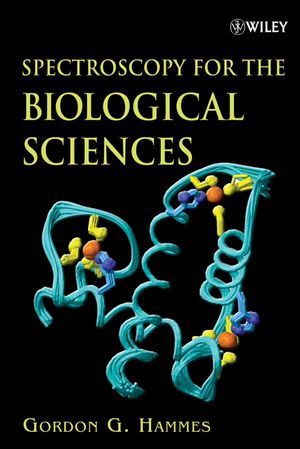Spectroscopy for the Biological SciencesISBN: 978-0-471-71344-9
Paperback
192 pages
July 2005
 This is a Print-on-Demand title. It will be printed specifically to fill your order. Please allow an additional 15-20 days delivery time. The book is not returnable.
|
||||||
1. FUNDAMENTALS OF SPECTROSCOPY.
Introduction.
Quantum Mechanics.
Particle in a Box.
Properties of Waves.
References.
Problems.
2. X-RAY CRYSTALLOGRAPHY.
Introduction.
Scattering of X Rays by a Crystal.
Structure Determination.
Neutron Diffraction.
Nucleic Acid Structure.
Protein Structure.
Enzyme Catalysis.
References.
Problems.
3. ELECTRONIC SPECTRA.
Introduction.
Absorption Spectra.
Ultraviolet Spectra of Proteins.
Nucleic Acid Spectra.
Prosthetic Groups.
Difference Spectroscopy.
X-Ray Absorption Spectroscopy.
Fluorescence and Phosphorescence.
RecBCD: Helicase Activity Monitored by Fluorescence.
Fluorescence Energy Transfer: A Molecular Ruler.
Application of Energy Transfer to Biological Systems.
Dihydrofolate Reductase .
References .
Problems.
4. CIRCULAR DICHROISM, OPTICAL ROTARY DISPERSION, AND FLUORESCENCE POLARIZATION.
Introduction.
Optical Rotary Dispersion.
Circular Dichroism.
Optical Rotary Dispersion and Circular Dichroism of Proteins.
Optical Rotation and Circular Dichroism of Nucleic Acids.
Small Molecule Binding to DNA.
Protein Folding.
Interaction of DNA with Zinc Finger Proteins.
Fluorescence Polarization.
Integration of HIV Genome into Host Genome.
α-Ketoglutarate Dehyrogenase.
References.
Problems.
5. VIBRATIONS IN MACROMOLECULES.
Introduction.
Infrared Spectroscopy.
Raman Spectroscopy.
Structure Determination with Vibrational Spectroscopy Resonance Raman Spectroscopy.
Structure of Enzyme-Substrate Complexes.
References.
Problems.
6. PRINCIPLES OF NUCLEAR MAGNETIC RESONANCE AND ELECTRON SPIN RESONANCE.
Introduction.
NMR Spectrometers.
Chemical Shifts.
Spin-Spin Splitting.
Relaxation Times.
Multidimensional NMR.
Magnetic Resonance Imaging.
Electron Spin Resonance.
References.
Problems.
7. APPLICATIONS OF MAGNETIC RESONANCE TO BIOLOGY.
Introduction.
Regulation of DNA Transcription.
Protein-DNA Interactions.
Dynamics of Protein Folding.
RNA Folding.
Lactose Permease.
Conclusion.
References.
8. MASS SPECTROMETRY.
Introduction.
Mass Analysis.
Tandem Mass Spectrometry (MS/MS)..
Ion Detectors.
Ionization of the Sample.
Sample Preparation/Analysis.
Proteins and Peptides.
Protein Folding.
Other Biomolecules.
References.
Problems.
APPENDICES.
1. Useful Constants and Conversion Factors.
2. Structures of the Common Amino Acids at Neutral pH.
3. Common Nucleic Acid Components.
INDEX.



